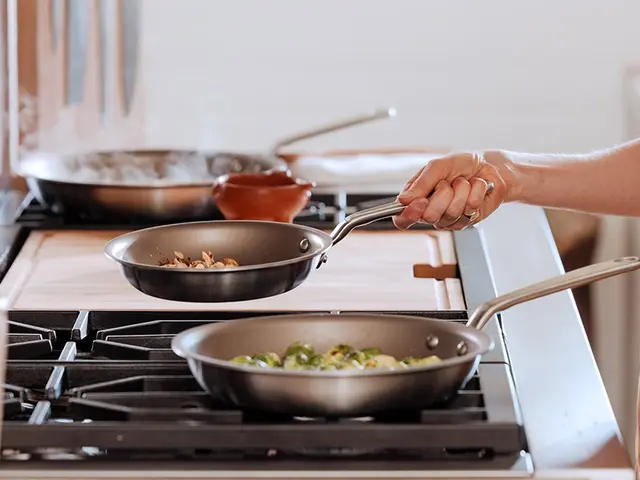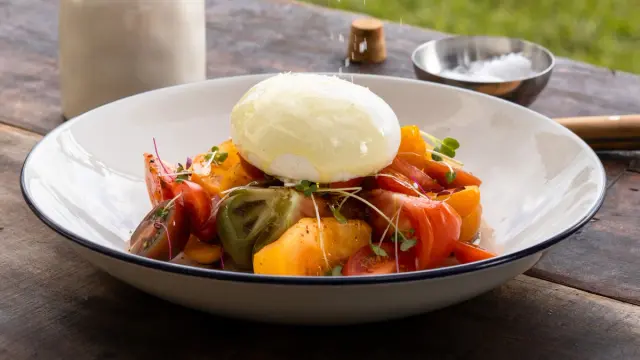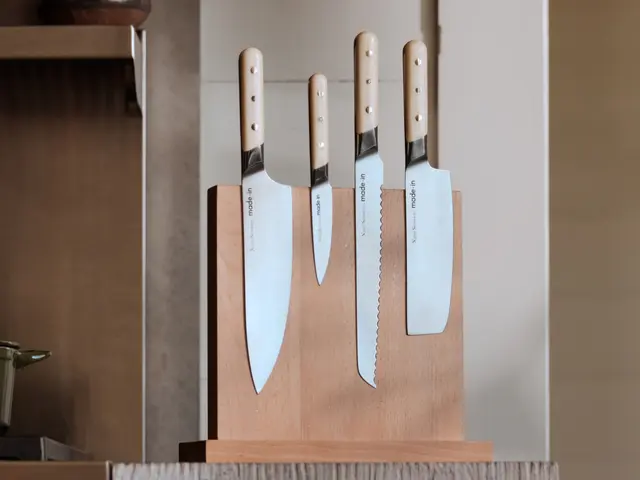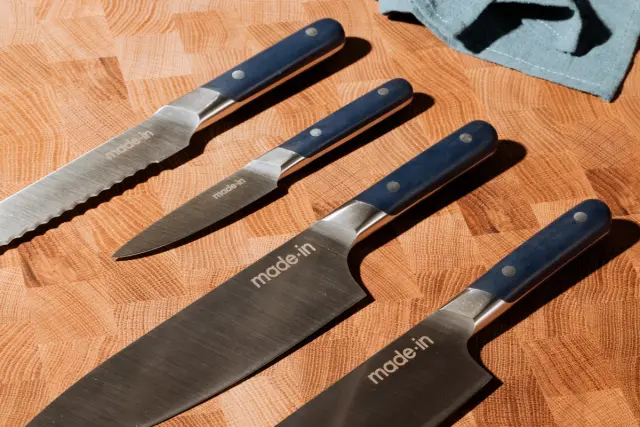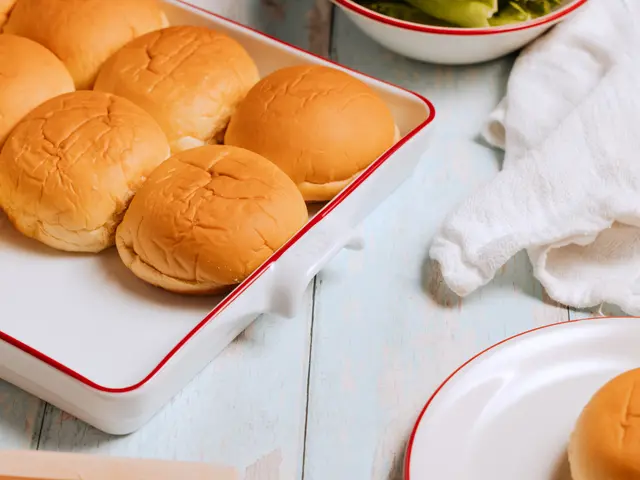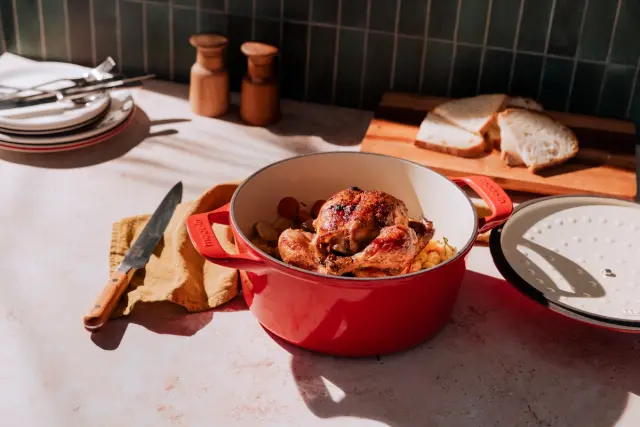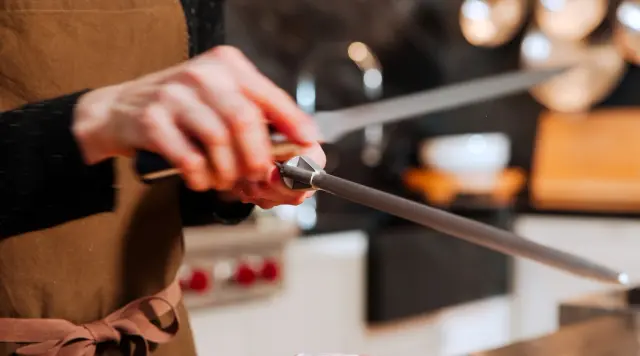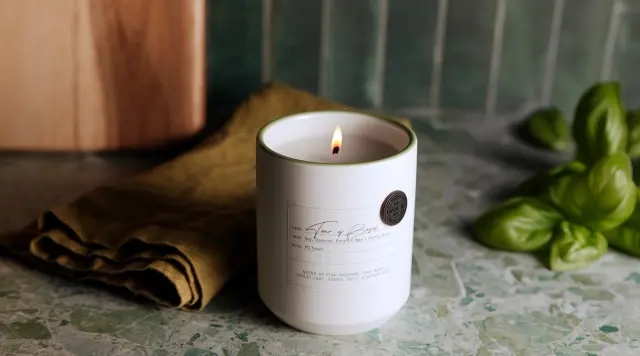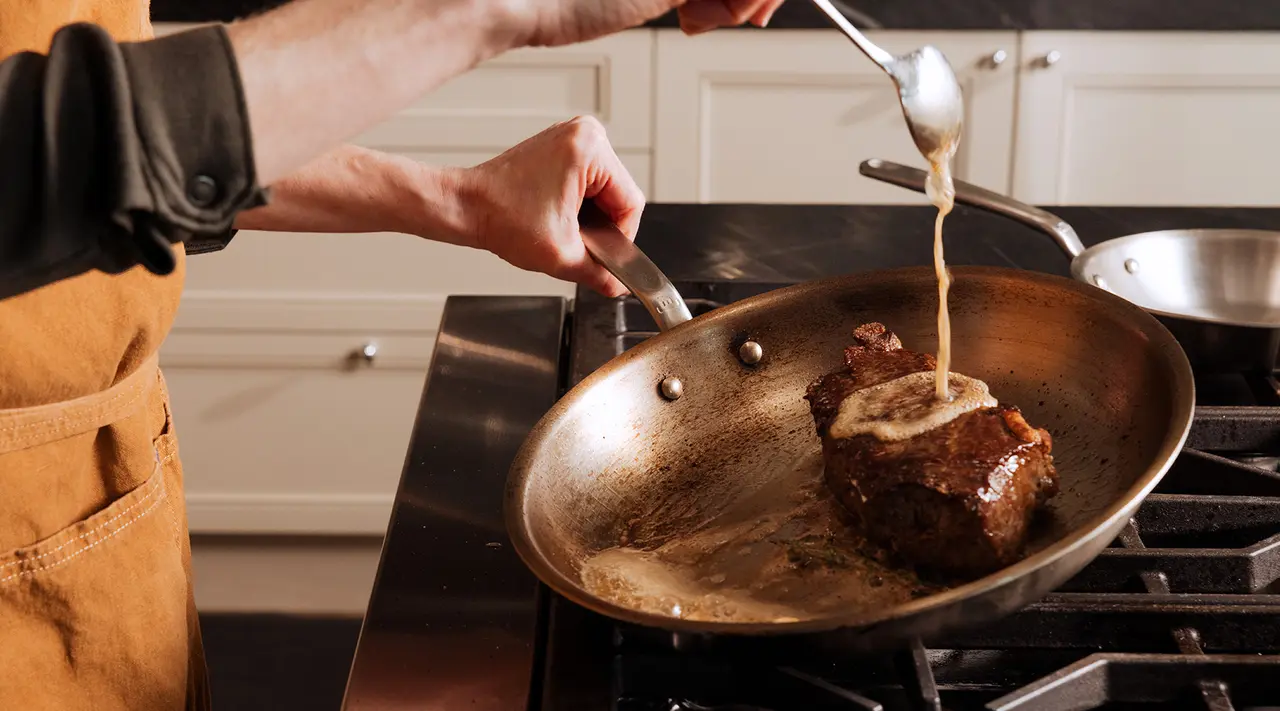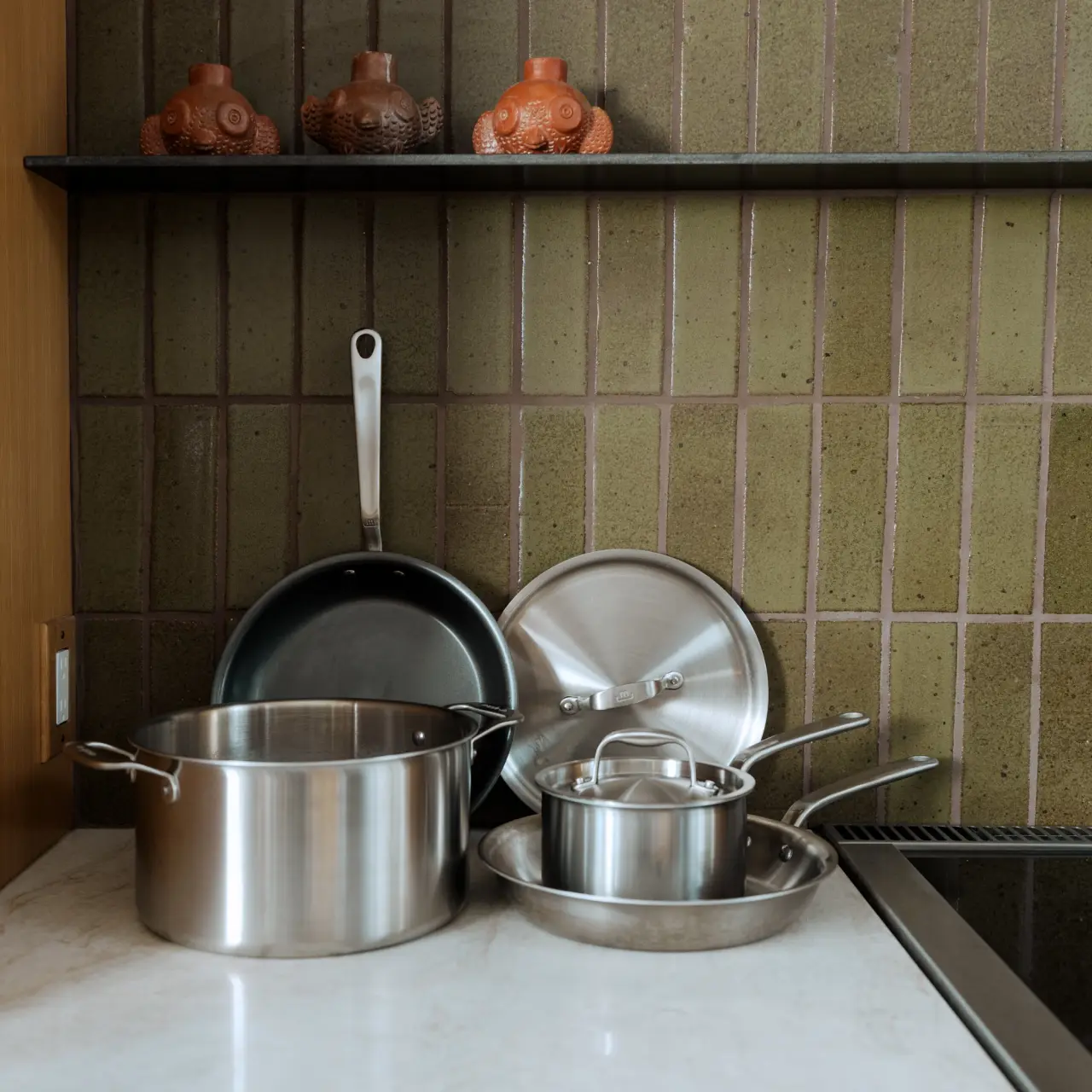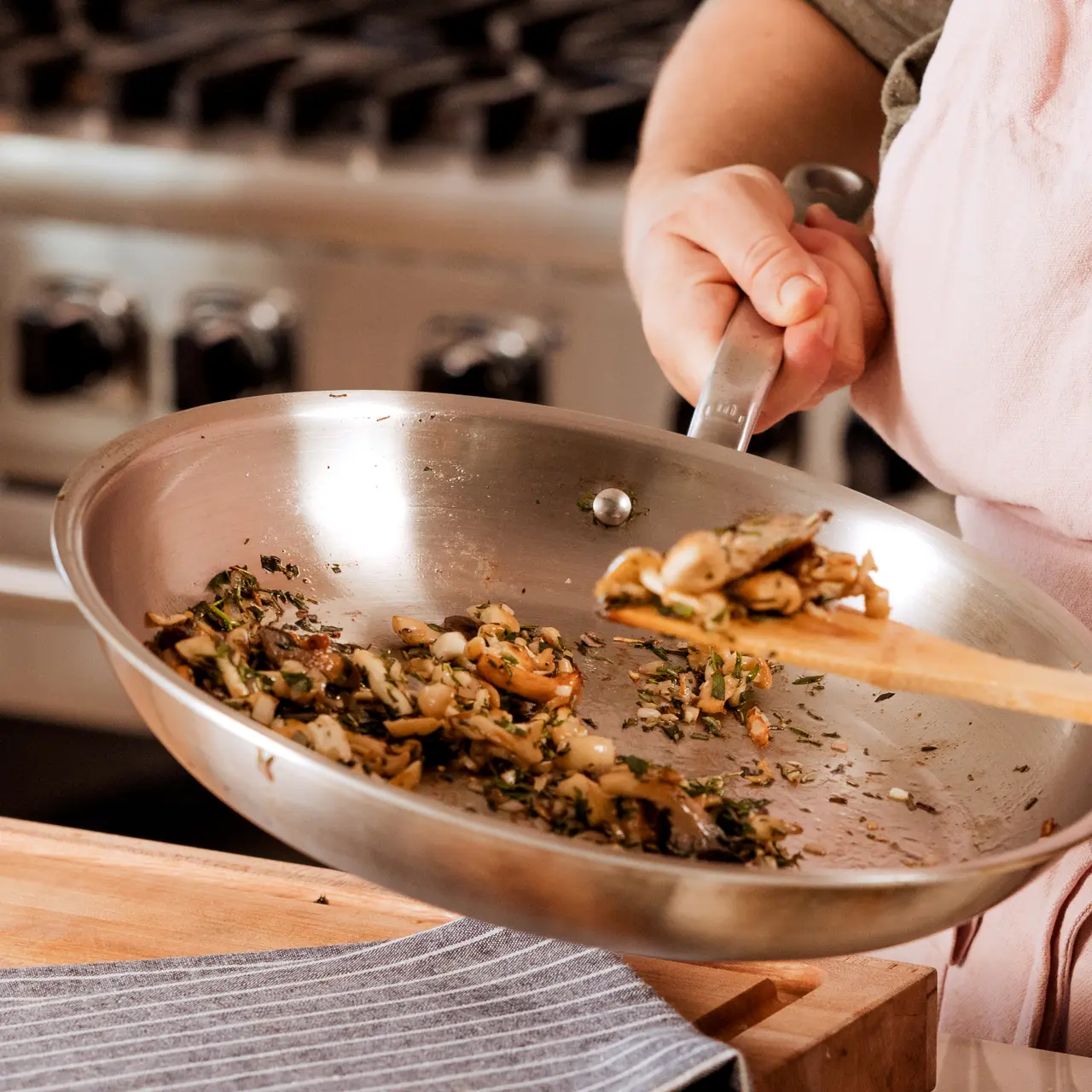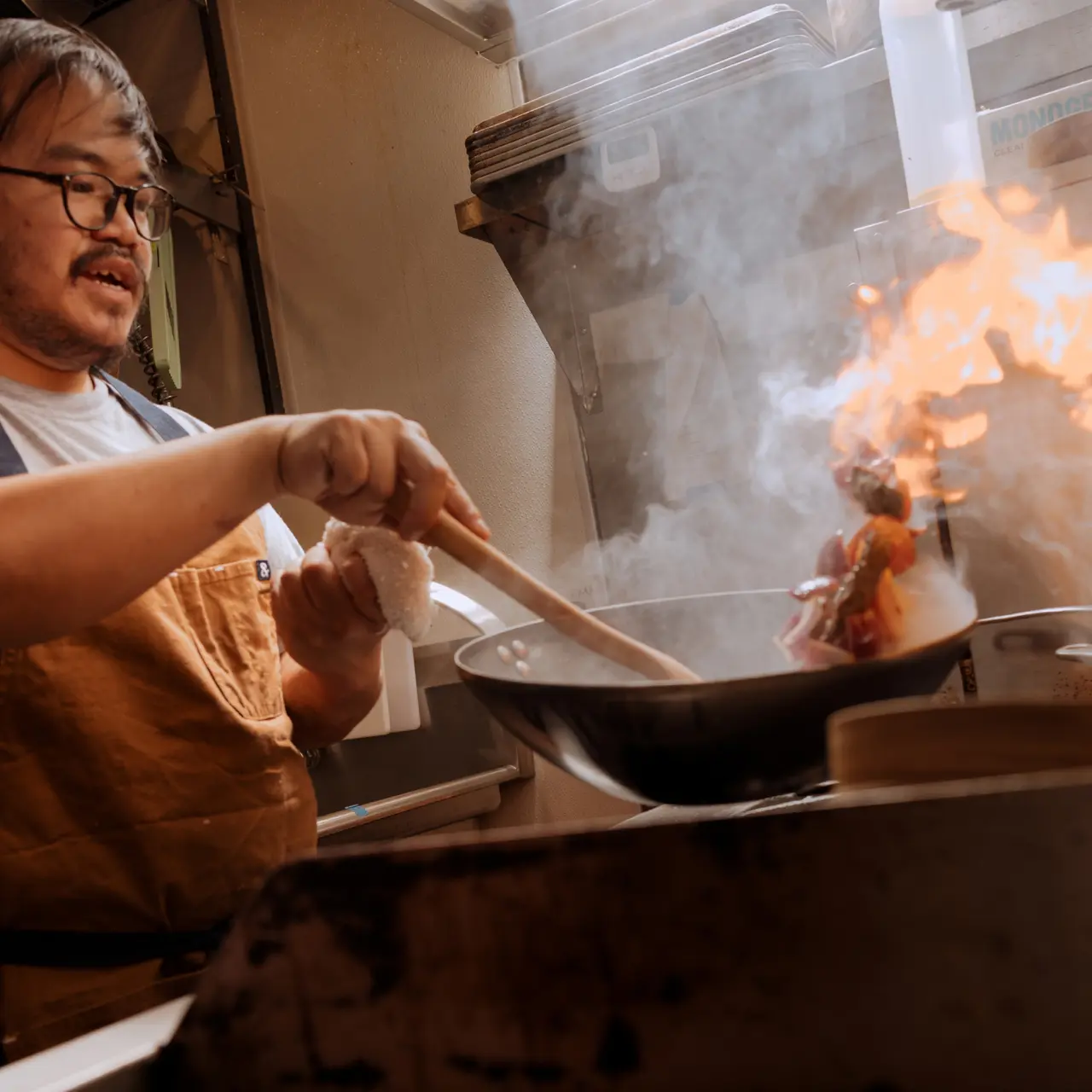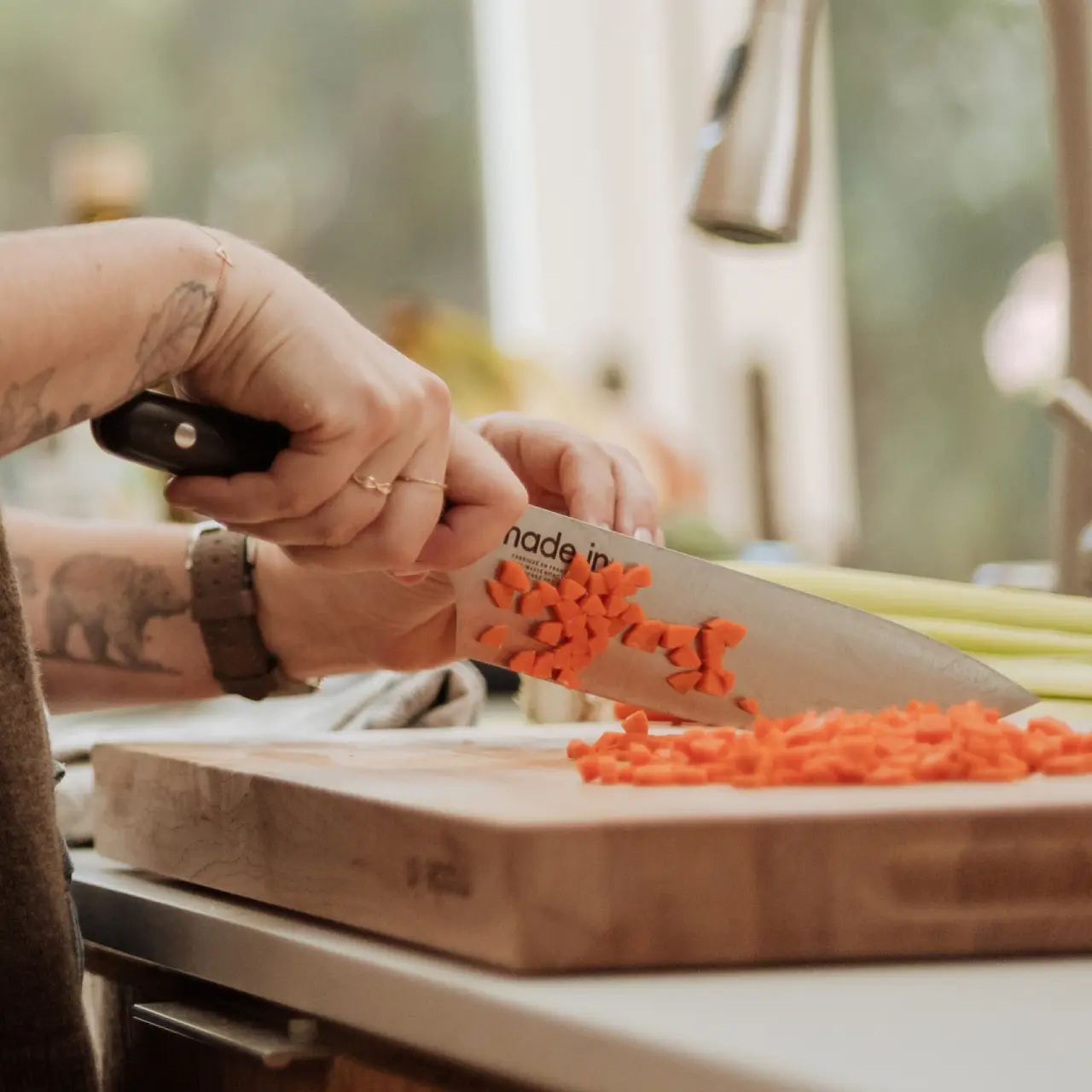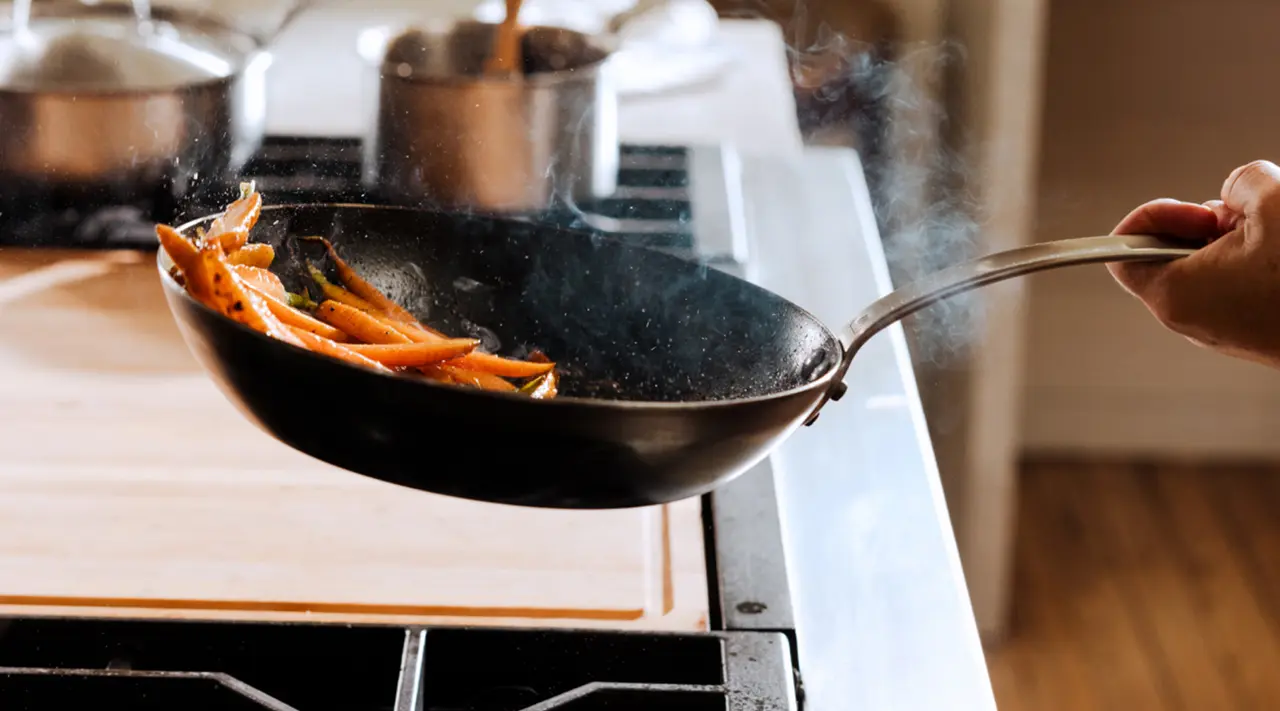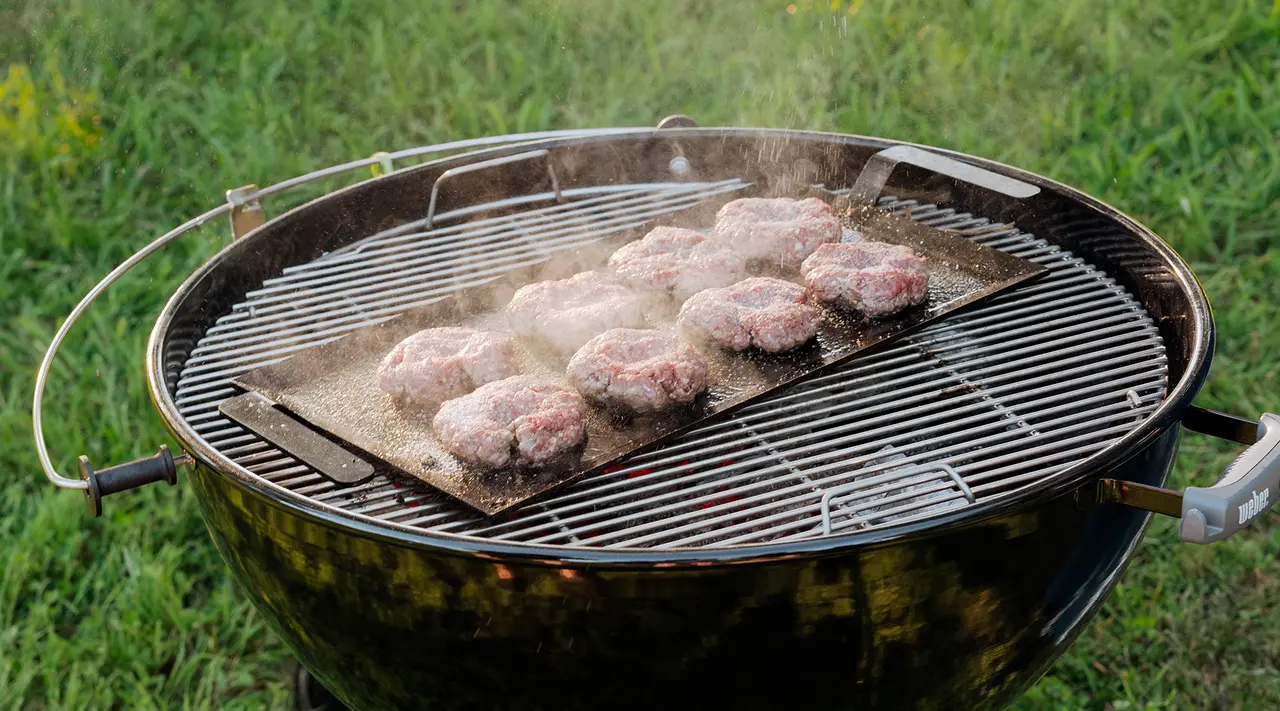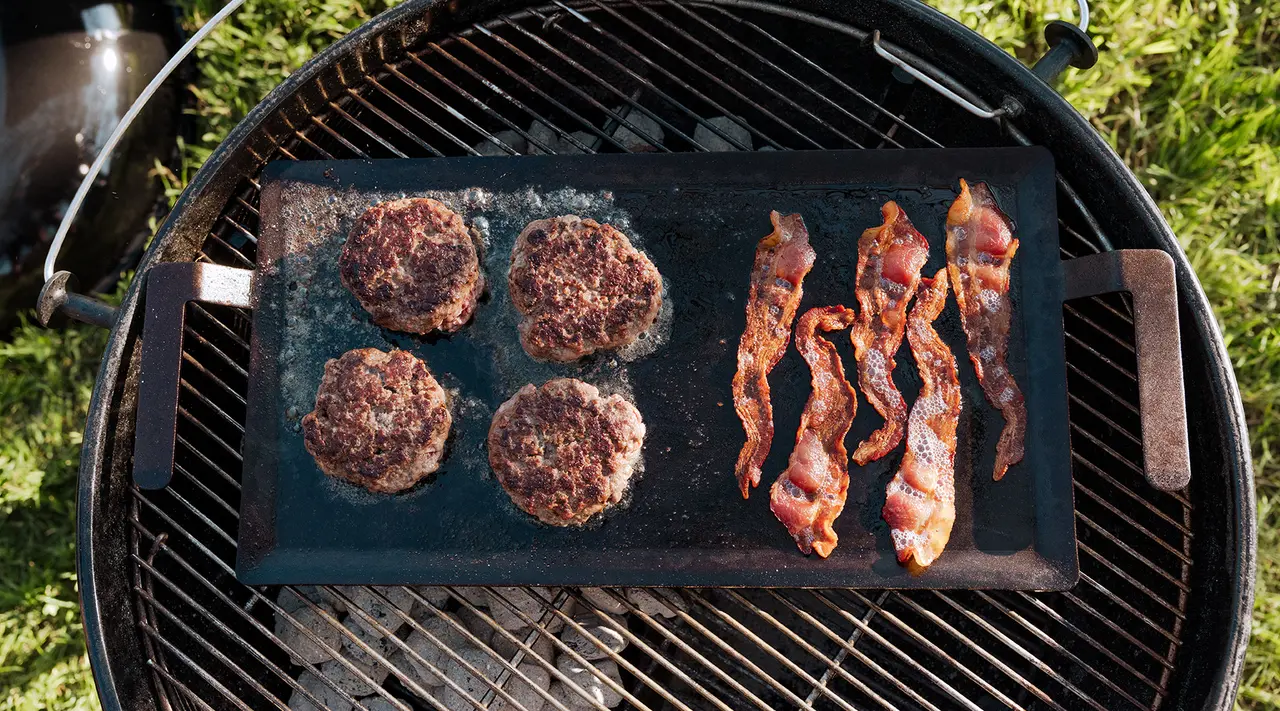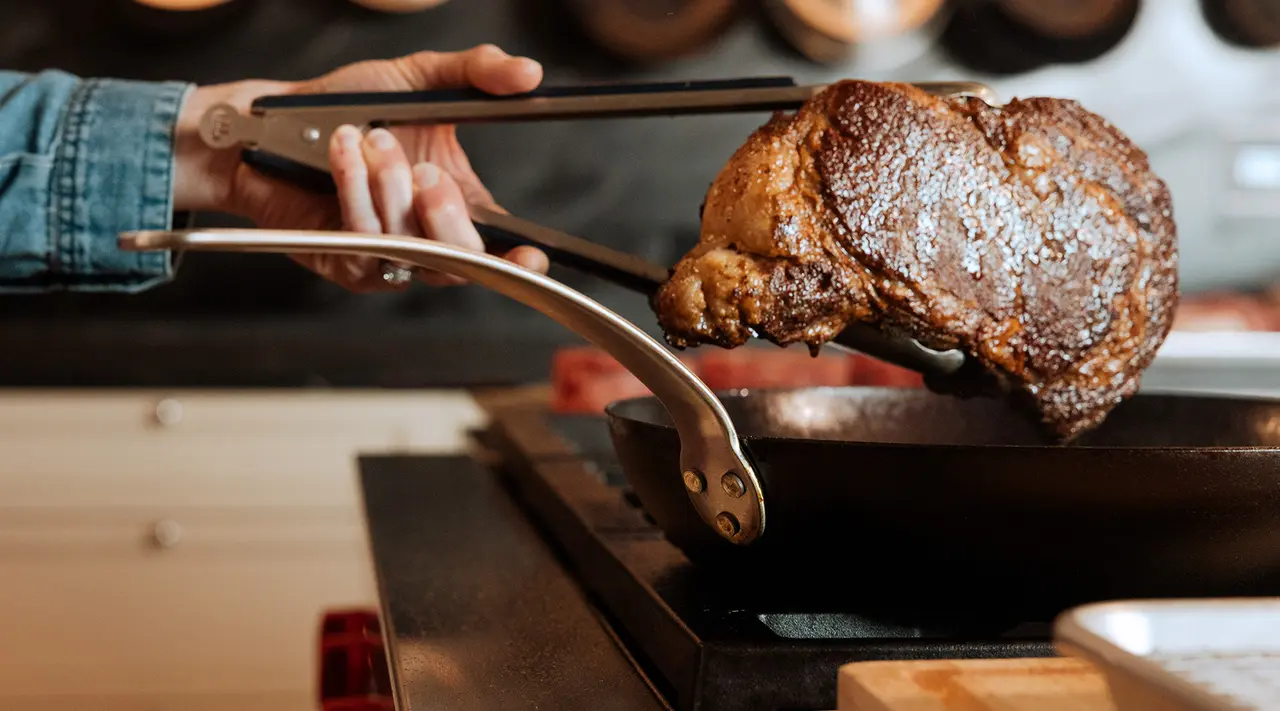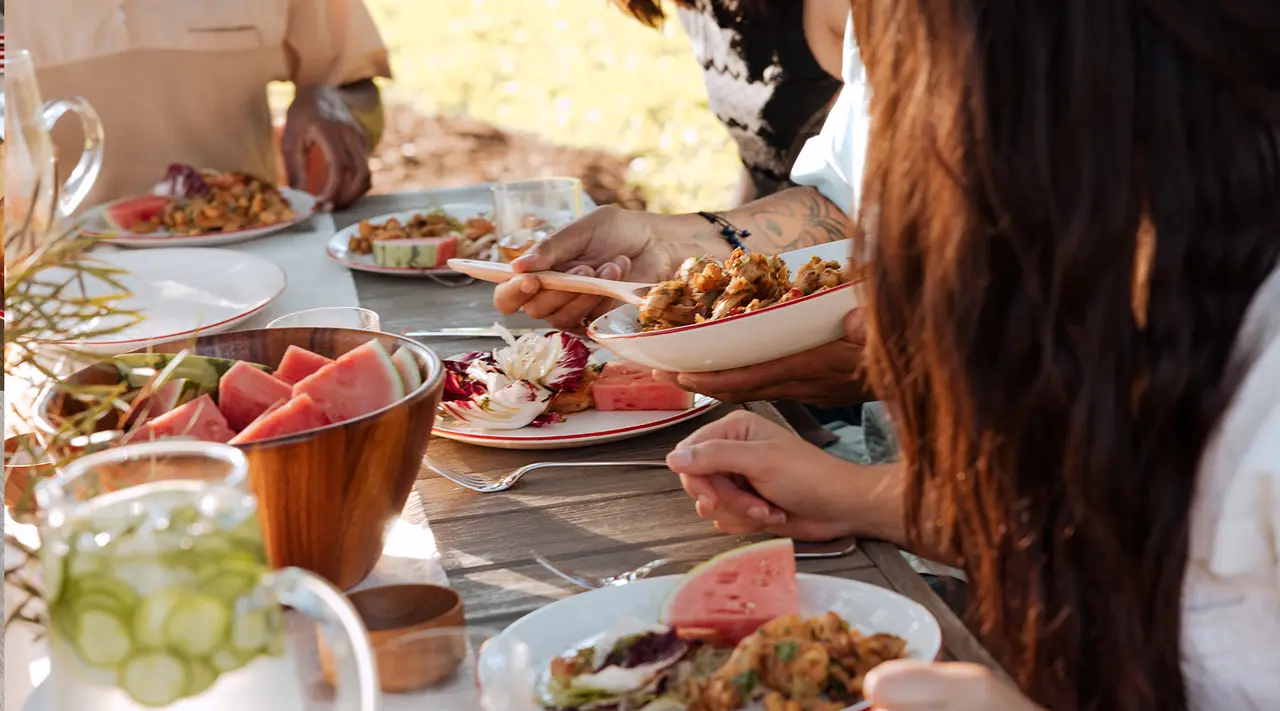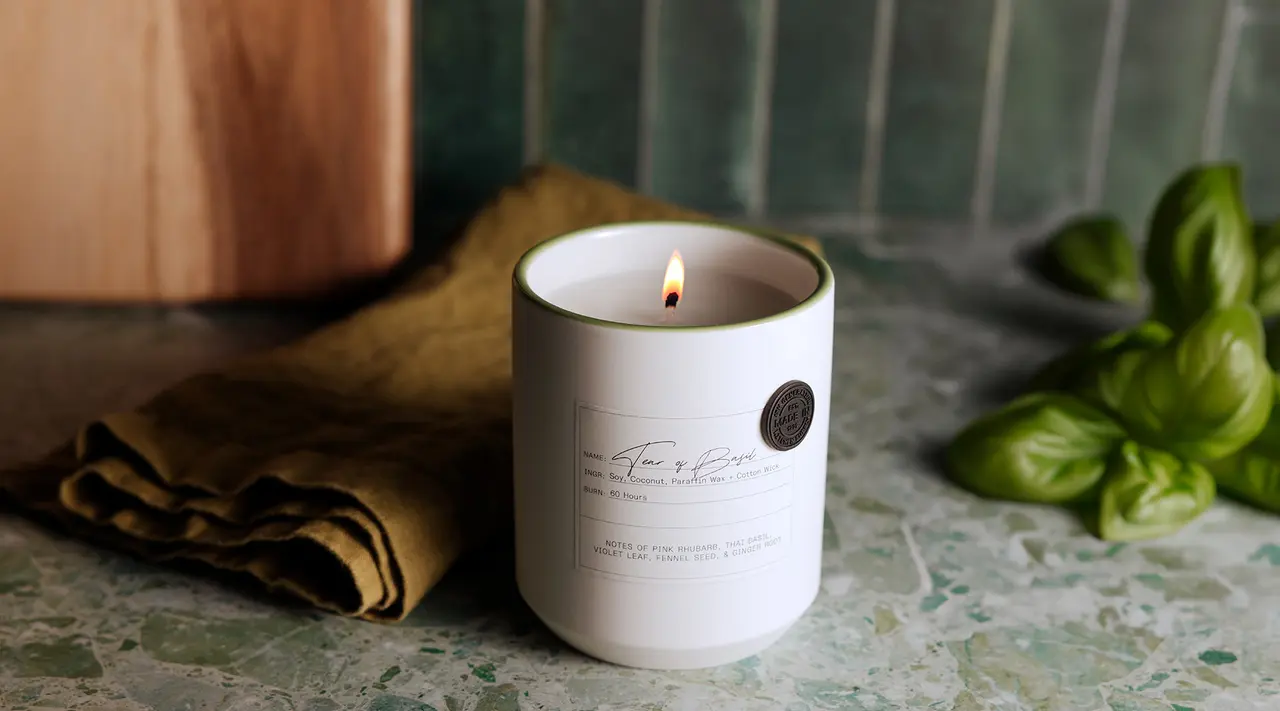Pan sauce: it’s rich, it’s golden, it’s savory, and it’s one of the reasons restaurant food—from tangy, buttery duck a l’orange to elegant steak au poivre—always seems to taste better than anything you cook at home.
But you don’t need to be a chef to pull together the perfect pan sauce—and today, we’re going to teach you how it’s done. You won’t need much equipment beyond a good-quality pan (Stainless Clad is our top choice for making pan sauce), your favorite protein, and a little patience.
What Is a Pan Sauce?

Pan sauces—literally, sauces built in a pan—help pull together a meal by adding new layers of flavor, texture, and aroma, using fond (aka, the delicious crispy bits that form on the bottom of the pan after cooking a protein) as the foundation.
The basic formula of a pan sauce is as follows:
- Sear protein (this can be duck, chicken, or whatever you like)
- Deglaze the fond with a cooking liquid, like wine or stock.
- Stir and swirl the pan until smooth and emulsified.
- Et voilà: you’ve got a silky pan sauce ready to drizzle over your finished plate.
But wait: you don’t have to stop there. One of the best things about a pan sauce is that, once you’ve mastered this formula, there are endless variations to play around with: you can start adding butter, aromatics such as garlic and herbs, and any spices you have on hand. Try a buttery lemon-herb sauce; a red wine sauce; or even a balsamic vinegar sauce. For a thicker, gravy-like pan sauce—like a white, Southern-style gravy—you can add a starchy ingredient like flour or cornstarch.
Tools Required for Making Pan Sauces

While you don’t need any fancy equipment to make a pan sauce, there are a few things you should have at the ready.
Skillet or Sauté Pan
Since you’ll be using the same pan to build your pan sauce and cook your protein, we recommend using something that’ll give you a really deep sear. Our Stainless Clad is great for this purpose: not only is it highly conductive, but it’s also non-reactive, which means you can use acidic ingredients like wine or lemon juice to deglaze the pan.
You can also use carbon steel or cast iron if you prefer, though make sure to use a non-acidic deglazing liquid like chicken stock instead as acidic ingredients can strip the seasoning on carbon steel and non-enameled cast iron.
Wooden Spoon or Spatula
Making a pan sauce requires constant, rapid stirring, preferably with a wooden spoon or spatula. Either of these also work well for scraping up the bits of fond, ensuring that all of it gets incorporated into the sauce.
Whisk and/or Fine Mesh Strainer
For a super smooth, perfectly emulsified sauce, you’ll need a whisk. Make sure to grab one that’s sturdy, as well as small enough to fit into the corners of the pan so you don’t lose any sauce or aromatics. Optionally for the overachievers, you can also finish your sauce by passing it through a fine mesh strainer, which will get you an even silkier final product.
Guide to Making a Pan Sauce
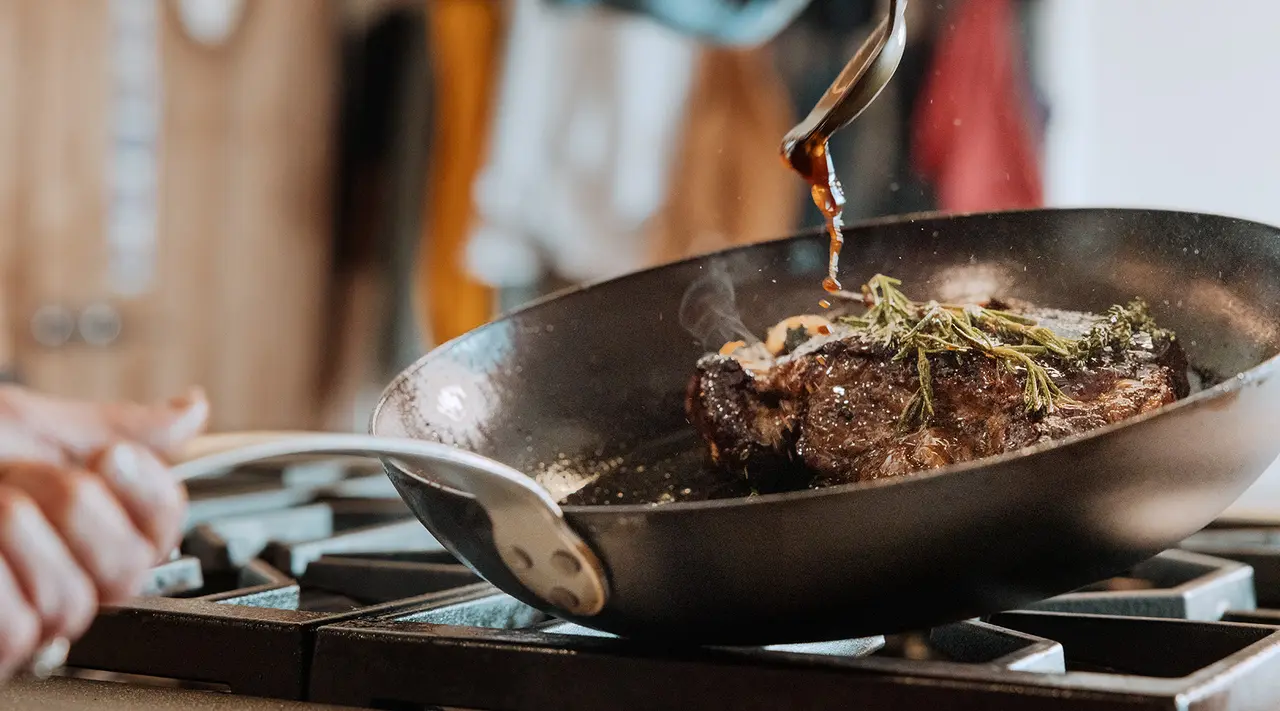
Once you’ve got all your tools and ingredients in place, it’s time to get started.
Ingredients for a Basic Pan Sauce
- Fond, plus any leftover pan drippings/fat from cooking protein
- A deglazing liquid like chicken stock, wine, or cuisson
- Aromatics like shallots, garlic, and chopped fresh herbs
- A thickening agent like butter, flour, cornstarch, or milk
- Water or other liquid for adjusting the thickness and consistency of your sauce
- Seasonings (salt, pepper, and whole or ground spices)
Step-by-Step Pan Sauce
Here’s our classic pan sauce recipe, ready in just 7 steps.
1. Sear Your Meat
Preheat your pan over medium-high heat, then add a small amount of olive or vegetable oil. Add your well-seasoned protein, then sear until deep golden brown on both sides. There should be plenty of fond left on the bottom of the pan—don’t touch it or scrape it off!
2. Add Aromatics
Move seared protein off to the side to rest, then lower the heat. Add a bit more fat (we like to use butter at this stage) to the pan. Once your butter is melted and sizzling, or your oil is starting to shimmer, add finely chopped or minced aromatics. This could be garlic, shallots, or herbs—either something hardy like rosemary or thyme, or delicate like tarragon.
3. Deglaze
Sweat your aromatics for a few seconds so that they flavor your cooking fat, but don’t let them brown. Next, add your deglazing liquid—we mentioned that you could use stock or wine, but feel free to get creative: beer or cider would be especially great with pork-based dishes. Bring the liquid to a simmer, then lower the heat. Allow the mixture to reduce slightly, and any alcohol to cook off.
4. Add Liquid
Once your sauce has reduced, pour in additional liquid: stock is best, though water will do in a pinch. Allow the mixture to reduce again.
5.Add Cooking Fat
Once the mixture has reduced by about half, it’s time to add fat. Butter is a no-brainer, though you could also add cream or milk. Stir well with a whisk while swirling the pan, allowing the mixture to thicken. If you’re adding ingredients like capers or brined peppercorns, add them at this stage.
6. Check for Consistency
Once your sauce is looking thick and glossy, drag your wooden spoon or spatula through it: it should leave a trail behind that stays put for a moment, rather than disappearing immediately. Now, reduce the heat to low and add your butter, whisking well to incorporate. At this point, your sauce should be thick and glossy enough to coat the back of a spoon—this consistency is called “nappe” in French. Remove from the heat.
7. Taste and Add Additional Seasonings
Give your pan sauce a taste—does it need salt? Acid? This is a good time to add acids like lemon juice, as they won’t break the sauce. Once it’s seasoned to your liking, serve immediately, drizzling it over your reserved protein or pooling it on the plate first.
Tips for Pan Sauce Success

Once you’ve made a pan sauce a few times, you’ll know the ins and outs of what it takes (and what your personal preferences are). If it’s your first time, here are some of our team’s tips for pan sauce success, learned from much trial and error in the kitchen.
Choose the Right Pan
As we’ve mentioned, using the right pan is essential for creating a pan sauce. Our pick is Stainless Clad, which boasts exceptional heat control and can go from searing hot to slowly simmering in moments.
You also can use carbon steel or cast iron, but be warned that acidic ingredients can strip the seasoning on carbon and non-enameled cast iron. They can still crank out a mean pan sauce, but make sure to use a non-acidic liquid for deglazing, and save lemon or lime juice for finishing off the heat.
Keep an Eye on the Heat
Pan sauces are delicate—as many cooks have learned, turn the heat up too high for even a moment and your silky emulsion can wind up burnt in a matter of seconds. Once you’ve deglazed, turn the heat down to medium or medium-low while you finish building the sauce (and don’t walk away from the stove!).
Get Creative With Add-ins
Once you’ve learned how to build a simple pan sauce, try out different combinations of aromatics, herbs, and liquids. Use black coffee to deglaze the drippings from pan-fried country ham to make red eye gravy; use brined green peppercorns for a bright, fruity take on steak au poivre; or make a tangy miso butter sauce for salmon—the world is, truly, your oyster.
Ready to Cook?
The term “elevated” gets thrown around quite a lot when talking about cooking, but it really does apply here: pan sauces are a quick, pantry-friendly way to instantly elevate any home cooked meal. We hope you feel emboldened to try making one yourself—and to make sure your kitchen is equipped with the right pans for the job.
